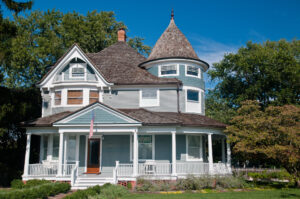Common Electrical Problems in Old Houses and How to Solve Them
Older homes are full of character and history, but they often come with a unique set of challenges, particularly when it comes to electrical systems. Understanding these common electrical problems and knowing how to solve them is crucial for maintaining the safety and functionality of your home. This blog will guide you through some typical electrical issues found in older houses and provide insight into how Sonner Electric can assist in resolving them.
Outdated Wiring: A Hidden Hazard
One of the most critical issues in old homes is outdated wiring. Many older houses were built with knob-and-tube or aluminum wiring, which are not only outdated but can also be unsafe. These old wiring systems can deteriorate over time, leading to exposed wires, short circuits, and even fire hazards. The solution is to have your home’s wiring inspected and, if necessary, completely upgraded by a professional electrician. Rewiring your home with modern, safe materials can protect your family and your investment.
Insufficient Electrical Outlets
As technology advances, the need for more electrical outlets becomes evident. Older homes were not designed to power the multitude of devices used in modern life, often resulting in insufficient outlets. This can lead to over-reliance on extension cords and power strips, which can be unsightly and unsafe. Upgrading your electrical system to include additional outlets, especially GFCI outlets in wet areas, can provide the convenience and safety modern lifestyles demand.
Flickering Lights: More Than Just Annoying
Flickering lights are a common issue in older homes and can be more than just a nuisance. They often indicate a loose or deteriorated connection somewhere in the circuit. If left unaddressed, this can lead to arcing—a dangerous condition where electricity jumps through the air from one conductor to another, creating heat and potentially causing fires. If you notice flickering lights, it’s essential to have a professional electrician investigate and solve the problem before it leads to more severe issues.
Overloaded Circuits: A Modern Burden
Older homes were not designed to handle the electrical load of modern appliances and electronics. This can lead to overloaded circuits, which can cause breakers to trip or fuses to blow frequently. It’s a sign that your electrical system is working harder than it should, which can be a fire risk. Upgrading your electrical panel and circuits to handle a more substantial load, or redistributing the electrical load across different circuits, can alleviate this issue.
Ungrounded Outlets: A Shock Risk
Many older homes come with two-prong ungrounded outlets, which do not provide a safe path for stray electricity. This lack of grounding can pose a significant risk of shock or electrocution, especially with modern three-pronged appliances. Upgrading to grounded, three-prong outlets is a critical safety improvement that should be undertaken in older homes. This usually involves running a new wire with a ground to each outlet or installing GFCI outlets as a safety measure.
Partner with Sonner Electric for Electrical Solutions
Tackling electrical problems in old houses requires expertise and care. [Business] is equipped with the knowledge and experience to handle the unique challenges of older homes. From comprehensive electrical inspections and modern rewiring to adding outlets and upgrading panels, Sonner Electric offers a range of services tailored to improve the safety and functionality of your home.


